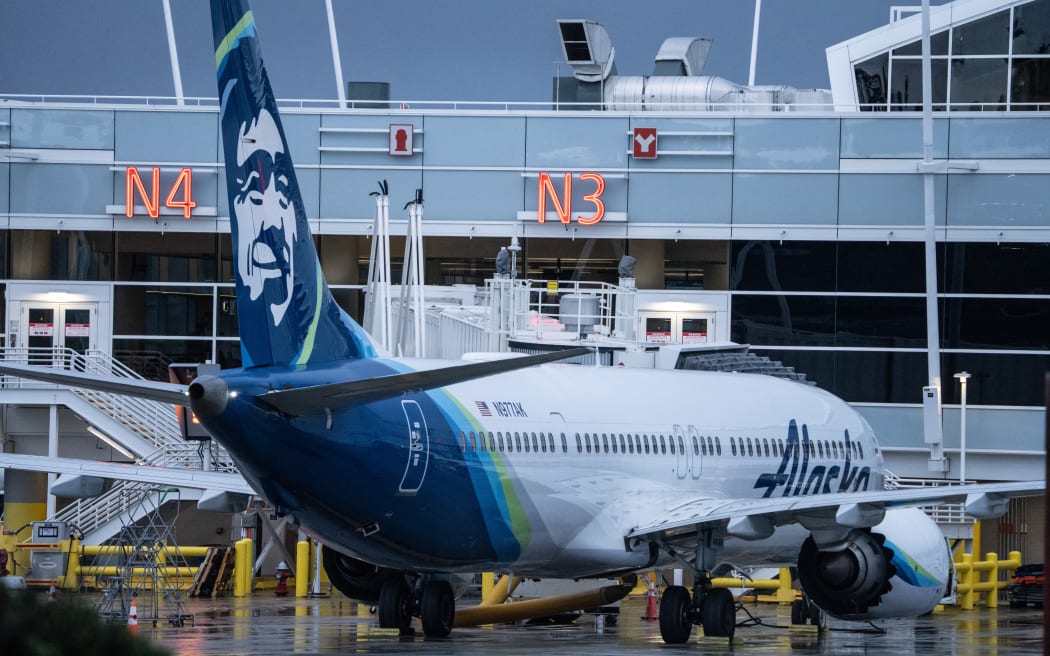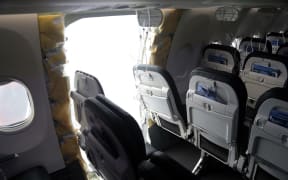
File photo: An Alaska Airlines Boeing 737 MAX 9 at Seattle-Tacoma International Airport, Washington, on 6 January. Photo: AFP/ Getty Images - Stephen Brashear
A door panel that flew off a Boeing 737 MAX 9 jet mid-flight on 5 January appeared to be missing four key bolts, according to an initial report by a US safety board investigating the incident.
Photo evidence released Tuesday shows bolts were missing from the door plug, which had been removed to fix rivets that were damaged in the production process, according to the independent US National Transportation Safety Board report.
"The investigation continues to determine what manufacturing documents were used to authorize the opening and closing" of the plug during the rivet rework," the report said.
Until now, the NTSB had not said what caused the panel to rip off an Alaska Airlines-operated jet as the plane climbed to 16,000 feet after taking off from Portland, Oregon.
The incident has become a full-blown safety and reputational crisis for Boeing that will slow plane production and risks it ceding further market share to rival Airbus.
The US Federal Aviation Administration grounded 171 of the Boeing 737 MAX 9 planes after the incident, most operated by US carriers United and Alaska Airlines, for inspections. Those planes were cleared to return to service in late January.
The NTSB has been focused on how the panel - fitted into this MAX 9 model in place of an optional exit - detached from the plane. The plug is held down by four bolts and then secured by "stop fittings" at 12 different locations along the side of the plug and the door frame.
All 12 stop fittings became disengaged during the event, the NTSB said in January.
Both United Airlines and Alaska Air said in the days after the blowout that they had found loose parts on multiple grounded MAX 9 aircraft.
The plug was manufactured by Spirit AeroSystems, the onetime subsidiary of Boeing that separated from its parent in 2005. The production process involves work at both its Wichita, Kansas facility before plane bodies are railed to Boeing's Renton, Washington, plant.
The FAA has taken a harder line than in the past on Boeing. In late January, it barred Boeing from expanding production of its 737 MAX planes due to the quality issues. That means it can continue producing MAX jets at its current rate, but it cannot increase that rate.
"I certainly agree that the current system is not working, because it's not delivering safe aircraft," FAA Administrator Mike Whitaker told lawmakers on Tuesday. "So we have to make changes to that."
The FAA is conducting an audit of 737 MAX manufacturing, which is looking at all elements of production at Boeing and fuselage production at its supplier Spirit.
Boeing shares were up 1.5 percent in trading Tuesday; the stock has lost more than 20 percent of its value since the beginning of the year.
- This story was originally published by Reuters



